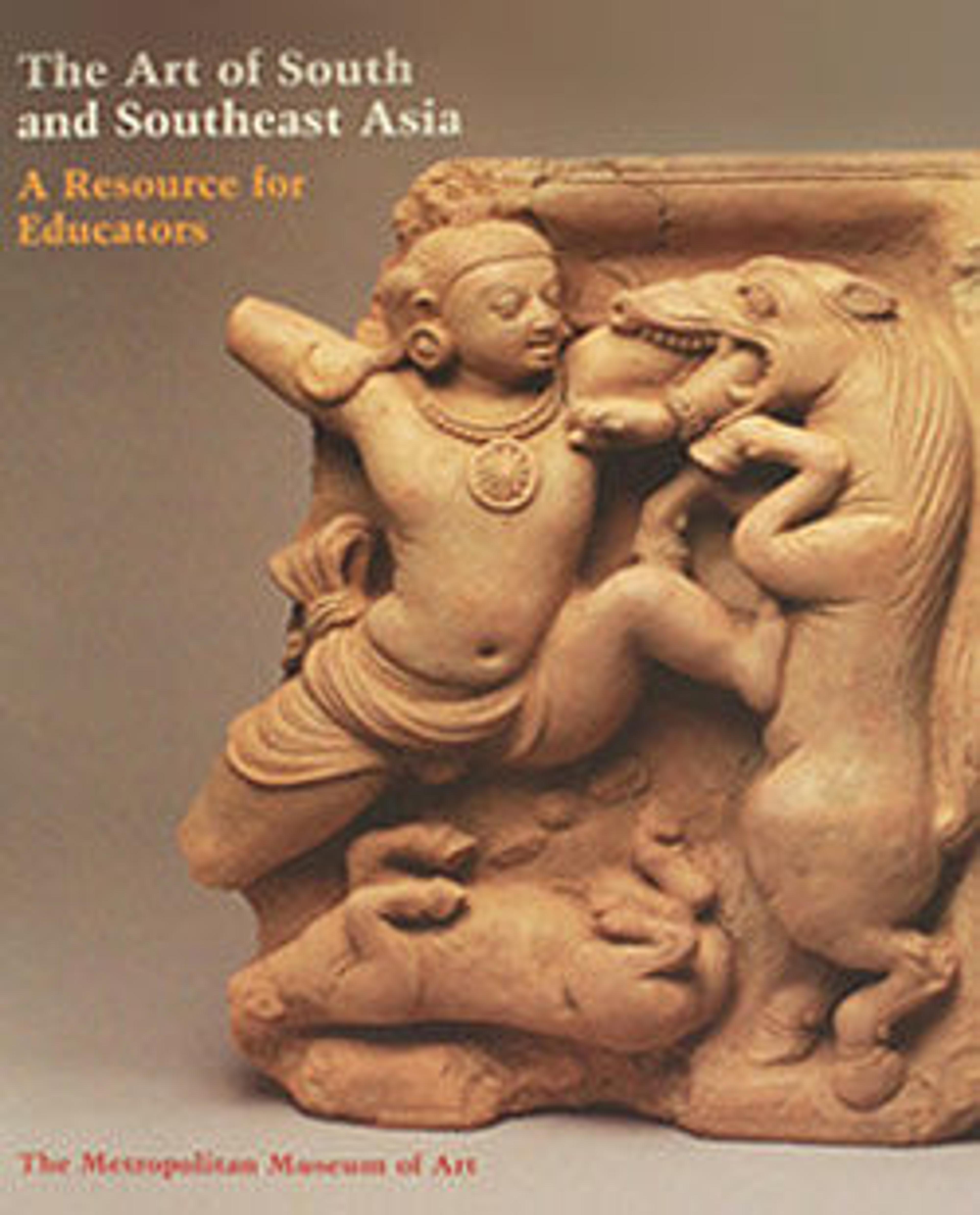Chamunda, the Horrific Destroyer of Evil
This is a fragment of a full-length sculpture portraying the ferocious Hindu goddess Kali in the form of Chamunda, an epithet derived from her act of decapitating the demons Chanda and Munda. Chamunda embodies bareness and decay. Her hair is piled up into a chignon decorated with a tiara of skulls and a crescent moon. She scowls, baring her teeth, and enormous eyeballs protrude menacingly from sunken sockets in her skeletal face. As a necklace, she wears a snake whose coils echo the rings of decaying flesh that sag beneath her collarbone. Just above her navel on her emaciated torso is a scorpion, a symbol of sickness and death. She presumably once held lethal objects in the hands of her twelve missing arms.
Chamunda is naked except for a short diaphanous dhoti partially covering the two tiger skins complete with heads that hang from her waist to her knees. Although her extremities are missing, it is clear from comparison with related images that this Chamunda stood with legs straight, the right turned outward. The starkness and uncompromising horror of this sculpture are representative of one aspect of Indian theology.
Like images of Shiva in his dark form of Bhairava, such macabre images of the Goddess are common occupants of the exterior walls of temples. They appear both on shrines dedicated to Shiva and those to the Goddess herself.
Chamunda is naked except for a short diaphanous dhoti partially covering the two tiger skins complete with heads that hang from her waist to her knees. Although her extremities are missing, it is clear from comparison with related images that this Chamunda stood with legs straight, the right turned outward. The starkness and uncompromising horror of this sculpture are representative of one aspect of Indian theology.
Like images of Shiva in his dark form of Bhairava, such macabre images of the Goddess are common occupants of the exterior walls of temples. They appear both on shrines dedicated to Shiva and those to the Goddess herself.
Artwork Details
- Title:Chamunda, the Horrific Destroyer of Evil
- Date:10th–11th century
- Culture:India
- Medium:Sandstone
- Dimensions:H. 44 1/2 in. (113 cm)
- Classification:Sculpture
- Credit Line:Purchase, Anonymous Gift and Rogers Fund, 1989
- Object Number:1989.121
- Curatorial Department: Asian Art
More Artwork
Research Resources
The Met provides unparalleled resources for research and welcomes an international community of students and scholars. The Met's Open Access API is where creators and researchers can connect to the The Met collection. Open Access data and public domain images are available for unrestricted commercial and noncommercial use without permission or fee.
To request images under copyright and other restrictions, please use this Image Request form.
Feedback
We continue to research and examine historical and cultural context for objects in The Met collection. If you have comments or questions about this object record, please contact us using the form below. The Museum looks forward to receiving your comments.
